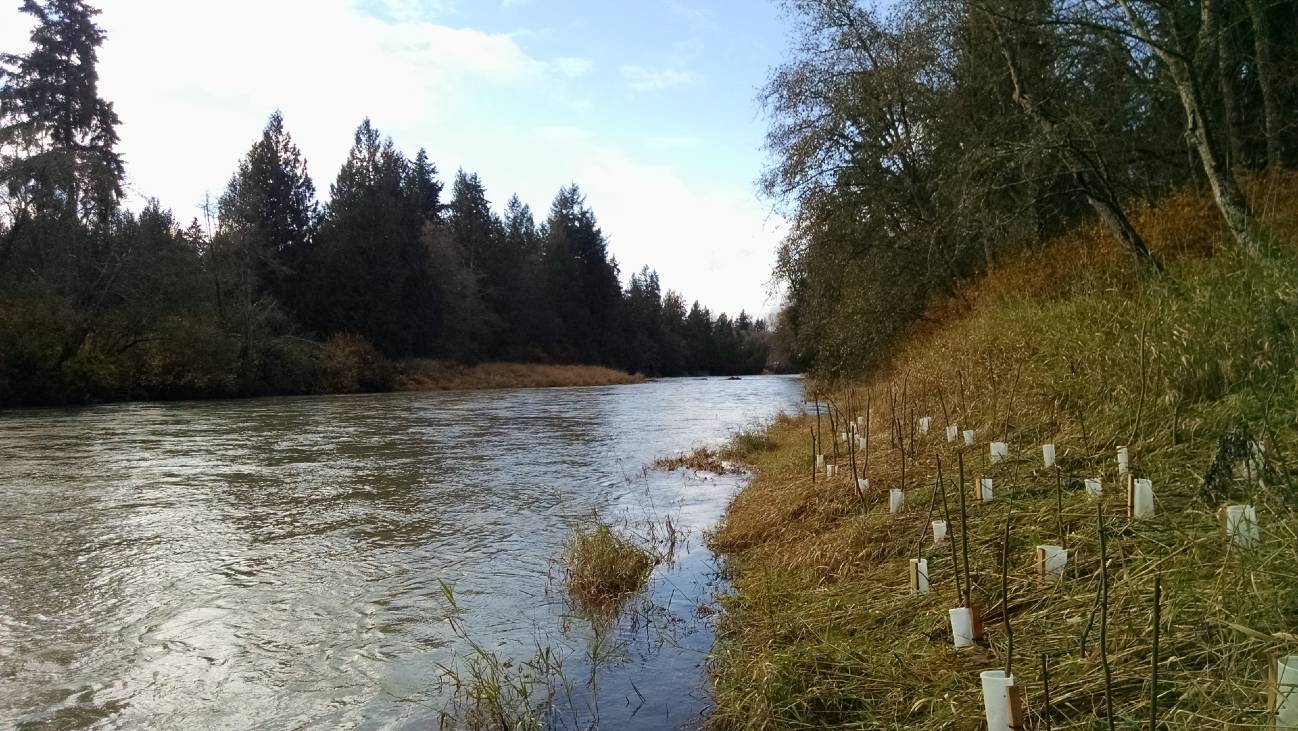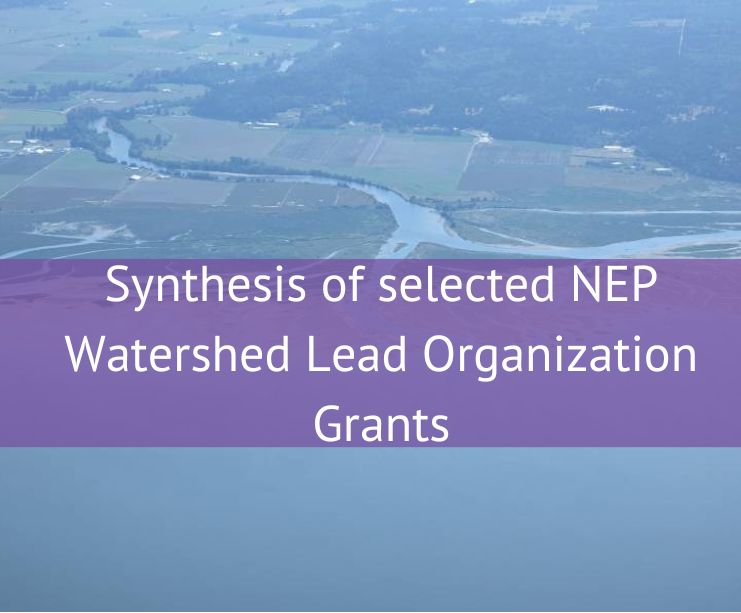A 2023 report from the University of Washington Puget Sound Institute synthesizes past Watershed Lead Organization Program grants to support the EPA-funded Land Development and Cover and Floodplains and Estuaries Implementation Strategies and offers lessons learned from the habitat restoration and land acquisition-focused grants.
More...
The goal of the Floodplains and Estuaries Implementation Strategy (Habitat Strategic Initiative Lead 2021) is to accelerate regional progress towards the Floodplains and Estuaries Vital Sign Indicators – increasing functional acreage of the 17 largest Puget Sound floodplains and 16 associated river delta estuaries. Progress toward the targets will help to restore critical ecosystem services in support of human well-being (cultural, economic, and flood safety) and ecological productivity and diversity.
The goal of the Land Development and Cover Implementation Strategy is three-fold: to prevent the conversion of ecologically important lands, to reduce barriers to infill and redevelopment in Urban Growth Areas, and to support long-term viability of agricultural lands and working forests.
Highlights of the Synthesis
The Habitat Strategic Initiative Lead tasked the Puget Sound Institute at UW Tacoma (PSI) with synthesizing the results of 13 riparian and restoration grants awarded funding by the Environmental Protection Agency (EPA) through the National Estuary Program (NEP) Watershed Lead Organization grant program (Watershed grant program). Between 2011 and 2016, the Watershed grant program, administered by the Washington Department of Commerce and the Washington Department of Ecology, distributed over $23 million in Puget Sound Geographic Program funds to support 85 projects to implement recovery priorities identified by the Puget Sound Partnerships’ Action Agenda, incorporating watershed-scale strategies to protect and restore Puget Sound.
For this portion of the Watershed grant program, PSI focused on 13 riparian and restoration grants that occurred from 2014 to 2021, totaling approximately $6.8 million. Of these grants, PSI analyzed over 150 documents including final summary reports, financial and progress reports, maps, meeting notes, economic analyses, and presentations provided by the grantees. PSI interviewed eight grantees to better understand the grantees’ perspectives on the successes, challenges and next steps for the projects.
The Watershed grants funded a range of activities included reach-scale planning, project design and scoping, land acquisition, riparian restoration activities (such as beaver management activities, invasive plant removal, stream re-meanderings, log jam installation, culvert removals and more), landowner and community outreach, data analysis and mapping, and water quality analysis, among others.
Grant locations ranged throughout Puget Sound from the Samish River watershed to the North Olympic peninsula to the Snohomish, Snoqualmie, Nisqually and Nooksack watersheds.
Grantee organizations included county governments like King County’s Water and Land Resources Division, municipality utilities such as Seattle Public Utilities, tribes including Nooksack Indian Tribe, Squaxin Indian Tribe, Suquamish Tribe, and non-profits and conservation districts including the Nisqually Land Trust, North Olympic Salmon Coalition, Snohomish Conservation District and the Skagit Land Trust.

What did we learn?
By diving deep into these riparian and restoration-focused Watershed program grants, several overarching themes emerged. These include:
Flexibility of the grant funding was key
The flexibility of the funding and low administrative burden of the grants was supported by interviews with grantees and in grantee documentation – every interviewee expressed the sentiment that the flexibility of the grants was instrumental in their success.
This flexibility included the ability to amend timelines and monetary amounts of the grants, not requiring matching funds, reducing administrative burden, and allowing pivots to grant scope and statements of work because of a variety of factors including COVID-related closures and cessation of in-person events.
According to a representative from Ecology, the grants "offered maximum administrative flexibility because of where we wanted to focus the allotted amounts around conservation easements and associated restoration activities.”
Land acquisitions are challenging and benefit from long-term funding that builds capacity for relationship-building and purchases
Land acquisitions are time-consuming and require due diligence, pre-planning, and establishing and maintaining relationships with landowners. To have all the pieces fall into place also requires a bit of luck.
Although grant funding can help to set up land acquisitions (such as through identifying high-priority properties with the development of a reach-scale plan) just because an organization has received grant funding for acquisition doesn’t necessarily mean a land acquisition will be successful during a specific grant time period.
Having “cash-in-hand” for aspects of the land acquisition process (such as appraisals, conducting meetings with interested landowners) is instrumental to making a land acquisition more likely to be successful, though, and the Watershed program grants did help the majority of grantees succeed with land acquisition projects because of the funding that was available.
The ability to build relationships for future acquisitions and prioritize those acquisitions through the development of reach-scale plans was noted as critical to future conservation efforts. The reach-scale plans additionally identified target priority properties for acquisitions – which allows for organizations to develop a short-list of high-value properties ready at hand.
Additional findings from the grants include the importance of funding for implementation and maintenance of riparian restoration activities (such as beaver management activities, invasive plant removal, stream re-meanderings, log jam installation, culvert removals and more), using social marketing techniques for landowner and community outreach, sharing and open access for data and mapping, among others.
This synthesis serves as a resource for restoration practitioners in Puget Sound and can inform future funding opportunities in the region.

